Which story is better suited to the Christmas season than that of a prophet? The story of an especially remarkable instrument, of one of the best built analog synthesizers of all times …
And then, too, being the story of a prophet which neither forsaw the rapid upheavels of the digital age nor the accompanying demise of its own company.
The present point in time is especially well-suited to our story, because DSI (alias Dave Smith Instruments, now again under its original name “Sequential”) has just released the new Prophet XL – the second Sequential synthesizer with 76 weighted keys, 35 years after the Prophet-T8.
But the similarities (common name, identical number of keys) end here. Prophet X / Prophet XL are digital Sample & Synthesis instruments, additionally equipped with CEM filters. Modern, technologically highly qualified, up-to-date hybrid instruments far away from the pure analog sound architecture of the old Prophet-T8.
Admittedly, the T8 was a bit of a hybrid on its own …
History of the giant
The Prophet-T8 astonishes us for many reasons. For its musical efficency, for its sound potential, for its uncompromising architecture, for its many impressive technical extras. To say nothing of its attractive price on the second-hand market. Finally, the complex development process behind the T8 is impressive …
Let’s take a look back! The amazingly successful Prophet-5 of 1978 proved both a benefit and a burden to Sequential, and the great challenge for many years was to find a worthy successor to the original Prophet.
The Prophet-10 of 1980 – very big, very expensive, a tick unreliable – boasted no real innovations. Its integrated sequencer could be bought as a simple additional component for the Prophet-5 and its double keyboard was double, but not dynamically sensitive. Its only obvious advantages were its duo-timbral voice architecture and its 10 voices.
As a consequence, way back in 1980 the decision was made to develope a new instrument, an instrument with 8 voices and a luxurious keyboard similar to a piano keyboard.
An instrument with velocity-, split- and layer-functions. Sequential’s planning group had some difficulty agreeing on the details of its luxury keyboard, but, in the end, the “Prophet-T8” project was approved on along with a new effect unit called “Pro-FX” and a monophonic synthesizer called “Pro-One“. The ladder becoming the company’s best selling instrument. Nearly 10,000 Pro-Ones were made in its 4 years of production.
But back to the T8. From the very beginning, the elaborate keyboard was the critical factor in its development. According to the marketing department, the goal was to build a new instrument that contrasted clearly with the 8-voice synthesizers that were then just hitting the market. Whereas the 61-note keyboard of a Roland Jupiter-8, Oberheim OB-X/Xa or Korg Trident had no touch sensitivity at its disposal, the designers sought to build a Prophet-T8 with “more” keys that were, in addition, velocity sensitive.
The telling “T” – standing for Touch – was an attempt to attract professional studio musicians.
Whereas the marketing and sales departments were aware of the great chance inherent in this new aspect, the technicians were considerably more sceptical, admittedly to their credit. Because it was the keyboard that slowed things down the most in the 2-year developmental of the T8. The new keyboard system was highly complex. Along with handcrafted wooden keys, additional technical applications, customized solutions and appropriate software were also necessary.
Fortunately, Sequential was able, in part, to fall back on already existing technical developments. The split/layer-function of the T8, for example, goes back to EMU’s 4060 keyboard that was used with the EMU Modular System. The 4060 from 1976 allowed for the creation of keyboard zones, resulting, for the first time, in multi-timbrality.
The keys of the T8 harken back to Pratt-Read, one of the oldest tool-manufacturers in the USA. Pratt-Read, founded in 1798 (!), ist still active today as Pratt-Read Tools, LLC.
The original Pratt-Read manufactured buttons, billard balls and other products made of ivory. The production of ivory piano keys (and, possibly, keyboard actions) followed in the golden age of the Forte-Piano around 1850. By the way, the manufacture of screw-drivers (beginning in 1834) is still the mainstay of the company.
But back to pianos and their keyboards. Pratt-Read continued with the production of keyboards after an interruption during World War II, enlarging the product palette to include organ / synthesizer keyboards – a branch that existed until the end of the 1980s. Myriads of American instruments produced in the 70s and 80s sported Pratt-Read keyboards.
The keyboard mechanism illustrated above – with its long wooden key and its wooden toggle (reminiscent of the piano keyboard production in the Pratt-Read tradition?) – was not an entirely new development. ARP already had used this keyboard in their – sadly ill-fated – “Electric Piano” dating back to 1979.
But Sequential didn’t leave it at that. Improving and refining velocity (optical sensors), adding release-velocity (!) as well as polyphonic aftertouch (pressure points under each key). The following Youtube Video demonstrates the complex inner life of the T8 keyboard. By the way, these developments mainly reflect the input of Steve Salani (velocity) und David Sesnak (polyphonic aftertouch).
David Sesnak, as a matter of fact, was part of the team that founded Wine Country Productions after the demise of Sequential in 1987/88 …
“Sequential Circuits® financial condition in 1987 prompted a small group of ex-Sequential Circuits® employees to form Wine Country Productions in an effort to provide after market support for all Sequential Circuits® products.
In 1988, Wine Country Productions acquired the entire remaining Sequential Circuits® stock, technical documentation, software, and spare parts. Since 1987, Wine Country Productions Inc. has provided spare parts, technical service, and operational support for the entire line of Sequential Circuits®instruments every single day.”
(Source: www.winecountrysequential.com)
The unbelievable quality of the Prophet-T8 keyboard led New England Digital (NED) to use it in its Synclavier in 1984. As a result, Sequential delivering hundreds of T8-keyboards before the company was swallowed by Yamaha in 1988.
Its elaborate wooden keyboard explains why the T8 measures 54 (!) centimeters in depth. Its width of 122 centimeters and its considerable weight (approx. 30 kg) places it among the bulkier synthesizers, by the way.
Finally, Sequential equipped the T8 prototype with an additional 3 keys (going from 73 to 76) and with a double CPU, the extra chip being necessary to compensate for the higher processing power (enormous velocity- and aftertouch-data).
Actually, inside the T8 you have the same Z80 8-bit-processor used in the Prophet-5/-10/-600, with an additional Z8002 16-bit-processor – for the LFOs and envelopes of the T8.
Prophet-T8 x 800
Developing the T8 took a full 2 years. A rudimentary prototype was presented at the NAMM Show in January 1982 and a month later at the Frankfurter Musikmesse. Optimizing the system and getting rid of all the bugs took another year, after which production began. The first batch of Prophet-T8 units appeared on the market in the middle of 1983.
However, this additional developmental year was to take its toll on the success of the instrument. Affordable polyphonic analog synths had just hit the market (Roland Juno-6/60, Korg Polysix, later the Poly-800) – no real competition for the T8, of course, but one of several obstacles that Sequential had to deal with (their answer was the Prophet-600).
But while Sequential was blithely ignoring second-class synths from Japan, real competition arose in the US itself. In 1982, Rhodes presented its Chroma …
This 8-voice synth featured the same high-quality Pratt-Read keyboard, had a similar voice architecture, lots of modulation possibilities, and was even slightly cheaper than the T8. And: The 1500 (some say 1800) Chroma stepped into the world in that decisive year before the Yamaha DX7 flooded the market. With the appearance of this 16-voice DX7 (tagged “The Prophet Killer” by David Abernethy), the entire era of analog poly-synths came to an – more or less abrupt – end.
Thus, the Prophet-T8 faced formidable odds from the very beginning: Direct competition from the Rhodes Chroma, and from new digital instruments with either higher polyphonic potential and / or a significantly lower price (such as Yamaha synthesizers and – as of 1985 – Casio synthesizers). And then again, Prophet-T8 was slightly unpopular, for several reasons: Bulky dimensions, considerable weight, high selling price. To make matters worse, the T8 concept seemed antiquated in 1983. In the eyes of some musicians, this new Sequential flagship was nothing more than a Prophet-5 with additional voices and a better keyboard. Which, to be honest, was true.
Above and beyond all this, sound purists found the T8 more comparable to the cheaper Prophet-600 than to its legendary predecessor Prophet-5. The T8 shared some Prophet-600 features (MIDI and software envelopes) and, somehow, it just didn’t have the class of the famous Prophet-5.
Furthermore, the T8 proved more of an burden than an asset to Sequential: high costs of development, elaborate production and – above all – the time-consuming calibration of each individual T8 key took its toll in the end.
The calibration for each T8 required 6 to 8 long hours. A time span probably equal to completely building, packing and shipping a couple of Pro-Ones or Prophet-600s.
So the company pulled the emergency brake and phased out the T8. At the end of 1985, after two and a half years of production (800 units), Sequential quit manufacturing the giant.
It was due in part to Europe that sales of the Prophet-T8 weren’t a complete disaster. In response to distributing problems, Sequential had taken things into its own hands in 1982 and expanded its sales options by opening a branch office in Mijdrecht near Amsterdam / The Netherlands*. From there, Sequential contacted music stores and sponsored advertising campaigns across the continent, even maitaining a cooperation with SIEL / Italy.
* England had originally been an option, but The Netherlands – with its low corporate taxing and its more suitable location on the main land – got the deal. Not to forget that Amsterdam at that time had the reputation of being a “funky city” … whatever that meant.
Another successful part of the European strategy was an efficient cooperation with synth-guru Paul Wiffen, at that time engaged in sales in EDP Wasp- and (in succession) OSCar-synthesizers. Wiffen successfully initiated promotional activities and eventually created a hype for the Prophet-T8 – especially in England.
Following the appearance of the Rhodes Chroma and the a resulting stagnation of the American market, the European subsidiary in The Netherlands proved to be a saving anchor. 1983/84 saw one of the best company turn-overs:
“The T8 was Sequential’s flagship instrument for a couple of years, and it gave customers the option of the absolute top-of-the-line Prophet. Through 1983-84, the Prophet-5 and Prophet-10 were still in production, and the Pro-One, Prophet-600, Six-Trak and Drumtraks were all selling well. It was Sequential’s peak productive period, reaching 13 million USD in sales in 1984. Eventually, however, the time and expense of manufacturing the slow-selling T8 became harder to justify, and production ceased at the end of 1985. Nowadays, of course, the T8 is a highly prized vintage synth.”
(David Abernethy in “The Prophet From Silicon Valley”, page 118)
The fact that the Prophet-T8 is today rated as one of the finest polyphonic analog synthesizers (along with the Yamaha CS-80 and Rhodes Chroma) is proof of its great significance. Countless pro-musicians around the globe still perform on the T8, appreciating its excellent sound, its superior keyboard, as the many musical possibilities that these bring.
Which makes it even more astonishing that the instrument has a current market value seldom higher than that of the Prophet-5. Used T8 instruments range somewhere between 4000 and 7000 Euros / USD (… that a synthesizer of this high standing does not command twice as high a price remains one of the unsolved mysteries of the present analog hype).
Features
As the sound-architecture of the T8 is more or less equal to its predecessor, we recommend our test report Sequential Prophet-5 – Milestone and Musical Legend for a starter. This allows us to reduce the technical description to the following compact summary …
The Prophet-T8 is provided with:
- 8 Voices, each with
– 2 VCOs
– 2 envelopes
– VCF
– VCA
x - LFO (0,005 – 40 Hz)
Actually: 2 LFOs (Upper / Lower) - Noise
x - Poly Modulation
Sources: Filter Envelope, Oscillator B
Destinations: Freq A, PW A, Filter
x - Polyphonic Aftertouch (Pressure Modulation) to
– Frequ A
– Frequ B
– PW
– Filter
– Amp
– LFO Amount
– LFO Frequency
- Velocity (including Release-Velocity) to
– Attack / Decay
– Release
– Filter Envelope
– Amp Envelope
x - 128 Memories (64 Lower / 64 Upper sounds)
- Sequencer
- Glide
x - Single / Split / Double Mode
- Unison (Simple / Tracking – with Chords)
x - Right / Mono / Left Audio Out
- Footswitches (End Release, Unison Track, Sequencer)
- Cassette Interface
x - Keyboard with 76 wooden keys
- Pitch-/Modulations-Wheel
x - MIDI IN / OUT
The above is of course very impressive. But, we do admit, many of these features (apart from MIDI) were not really new in 1983. Nonetheless, from our present-day perspective the T8 abounds in elegant details with a wealth of musical (expressive) possibilities that justify its place among the top polyphonic analog synths.
Oszillator synchronization and Cross-Modulation are just the beginning. Its extended (in comparison to the Prophet-5) LFO frequency range, and its OSC B im LO FREQ mode earn the applause of experienced sound designers. But it’s the poly-modulation along with those velocity and aftertouch details that really make your heart skip a beat.
Expressive potential
Then our musician begins by exploring the adjustment possibilities connected with variations in pressure. He presses a key. Any key. And then he presses it harder.
He realizes how unbelievably subtly the keyboard reacts to minimum changes in pressure – to changes in musical expression. Pulse-width modulation at your fingertips, for example? Using just “one” fingertip, leaving other pressed key unchanged? A minimal brightening of this or that voice by subtle changes of (individual) filter frequencies?
This brings us back to early music history. To the original meaning of “poly-phony”, the simultaneous sounding of individual voices independent of each other. A phenomen which later mutated to “multi-timbrality” in the world of high tech synthesizers.
Now, we have to admit that the T8 is not completely multi-timbral. But it does allow for the individual performance of every single voice – which, in fact, results in a kind of multi-timbrality.
Back to the studio, where our musician is waiting. Polyphonic aftertouch demands good finger technique and a feeling for the keys, something the musician can learn. And indeed he will want to, because every nano-second of performance on the Prophet-T8 stands for personal expression and the acoustic realization of his feelings and moods.
Such fine-tuned results require a high-quality, weighted keyboard together with natural wooden haptic. Essentially, this high-quality keyboard is what the Prophet-T8 is all about. But to be honest, our musician’s awareness of T8’s potential goes further than this. Simple contact with the keyboard, even before keys have been pressed down, manifests a sense of familiarity.
This feeling of being “one” with the instrument is the moment when our musician (equipped with sufficient Kleenex) ascends the mixing console and offers a toast to the haptic enjoyment and the many fine nuances at his disposal with the Prophet-T8.
The best of the artistic best
Again back to the keyboard and its functions. The very delicacy inherent in velocity change enables precise control of the VCF and VCA, as well as of Attack (Decay) and Release. Release-Velocity measures how quickly the key is actually released, yielding release data in accordance. Fast release: short decay. Slow release: long decay.
This must be carefully praticed, even by professional pianists, since the release of a key on the piano plays only a secondary role in playing. Unbeknownst to the superficial listener, the individual release time of each voice on the T8 has a central function, bringing the results closer and closer to the simlicity and nobless of real “natural” sound.
2nd Release – another function – creates the impression of sound under the sustained pedal of a piano. This can be activated on the panel (switch) or – more elegantly – by use of a pedal. But contrary to a real piano, the 8 voices of the Prophet-T8 must not release too long or they will block each other.
Be that as it may – this might sound funny – the T8 is one of the best piano substitutes among analog synths. At least, that’s the way it was in 1983 when John Bowen developed, by chance, one of the best piano presets ever created for analog synths. This together with the piano-like keyboard and the 2nd release (sustain) function yielded a pretty authentic replica of a piano.
One more word about keyboards. For experienced musicians, 76 keys is paradise on earth. That little extra for the even “deeper deep” bass (one extra octave) or for that unexpected solo in the upper register.
It has always puzzled us that – up to the present day – 5 octaves is seen as adequate (often shortened in the last few years to 4 …). Changes in the overall size of the instruments and in production costs are part of the answer to that question from the point of view of the industry, higher weight, limited studio space and rising end-prices from the point of view of the customer. This is all very logical.
But from the musical point of view, you can’t beat the 88 keys of a piano. Whereby, 76 keys generally does the job. But 61 keys is just too short … and 49 is a catastrophe. Which gives you an idea of the paramount importance of the Prophet-T8 with its 76 (weighted!) wooden keys.
Stereo behaviour also contibutes to the highly professional and natural aura of the T8. A decisive advantage over the Prophet-5, by the way. In Single mode, the individual notes alternate between left and right – something that would have been very useful for the Roland Jupiter-8 as well.
In addition, Split and Double mode send the upper sound to the right, the lower sound to the left output. True stereo, so to speak. And over and above all that, there’s a third (mono) output. Enabling you to further groom the overall sound.
“Perfect” Sound
Needless to say, its physical profile and already-useful presets make the T8 seem predestined to yield Piano / E-Piano / Clavinet sounds. Its Hammond imitations are also very convincing. But the fact is that such Piano / Hammond experiments aren’t that important for the studio musician of today.
More significant is the T8’s sound synthesis, which is in a class of its own. You’ll have a highly refined array of analog synth sounds at your fingertips – oscillator-synchronisation, unison-mode and glide, to name just a few.
And then there are those great brass and strings. Again effected by 76 keys with that glorious polyphonic aftertouch. And the stereo filter sweeps, percussive sequencer-sounds, effects of all kinds … By the way: The filter in self oscillation behaves very musically and enables a myriad of unusual effects.
To say nothing of the layering of two sounds as a sound-tool, the exact adjustment of the upper/lower volume-balance, the individual control of single keys (very expressive especially when it comes to FX-sounds). And much, much more …
Not to forget the excellent MIDI capabilities. The T8 cuts a good figure in today’s studio setup. Its transmission of polyphonic aftertouch data is one of the main reasons why many musicians – Joe Zawinul was a prominent example – depended on the T8 for decades, using it as the central master keyboard in their studio and on stage. Inherent in the T8 MIDI is the possibility to change the tuning of each of the 12 tones of the scale. A feature that was later implemented in the Prophet-5 (Rev. 3.3) as well. The lastest T8 MIDI version – still available at Wine Country, by the way – is OS 3.8:
“This 3 chip-set is the highest level operating system ROMs available from Sequential Circuits® for the T8. It offers MIDI operation in OMNI & POLY Modes, 16 MIDI channel assignments, send & receive program select data, pitch/mod wheels, sustain/hold alternate release commands by footswitch, and current program & sequencer data dumps via MIDI from a control panel command.”
(Source: http://www.winecountrysequential.com)
Tiny pitfalls
Despite all our praise, we don’t want to hide a couple of little pitfalls from you. We definitely miss the CV/Gate interface found on the T8 predecessor Prophet-5. And as hard as we have looked, we haven’t been able to find a VCF CV-IN port. You’re right, you’right – we have an adequate substitute in MIDI, but we’d still like to have that analog interface.
The wonderful wooden keyboard with its many assets may hold a few problems as well. Wood does change, the housing may be prone to minimal warping, the optical sensors underneath the keys may have to be readjusted in time.
In which case single keys would not react to pressure uniformly (or scarcely / not at all). But this is all a question of mechanical adjustment. Hear, hear, those of you thinking of using the T8 on tour / on stage: Long-lived T8’s often spend their best days in studios!
And now a special point. It could be that the T8 sounds a little less dramatic (and a little less direct) than the legendardy Prophet-5. This is partly due to the very sensitive keyboard, which, by its very nature, is capable of generating a wide range of dynamics. Massive tones. Subtle tones. Everything in between.
But then “dramatic” and “direct” are relative. T8 in Double mode develops great power, maybe even too great, as some studio musicians say. Complaining that in a mix the overall sound may eventually become too dense. According to some, the T8 is a relatively egocentric instrument, so to speak, leaving minimum room for other sounds.
Preferably for “Keyboarders”
Recommending the T8 for certain musicians only is not that simple. We don’t wish to preclude the use of this wonderful synth by any specific group. But we do feel obligated to point out (we’re talking about a 5.000 Euro/USD instrument) that caution is necessary in order to avoid misunderstandings.
Again, it’s all about the keyboard. It’s a question of how efficiently a musician can physically manage this hyper-sensitive tool. How proficient is he as a player? A keyboarder with little experience and only modest finger tecnique may be overwhelmed by the T8 with its hyper-sensitivity and its many sonic variables.
And last, not least: Those of you who keep a respectful distance to keyboards (“My gosh – musical theory!”) or who prefer making music from the computer end of it all, are probably better off without a Prophet-T8. Because the T8 is really too good to be reduced to a MIDI expander.
But, but, but … again we feel obliged to qualify that last statement. We mustn’t ignore the fact that, via MIDI, the T8 reacts to a full range of 76 notes, whereas a MIDIfied Jupiter-8, Memorymoog, OB-8 or other classic instrument only has a maximum of 61 notes at its disposal. Seen this way (assuming there’s enough room in your studio), implementing the T8 as a pure MIDI expander also has its justification.
So, let’s sum up. In the first place, Prophet-T8 is an instrument for true keyboarders – those musicians who feel at home wading through the keys, who value the immediateness of keyboard playing, and who associate musical creativity with spontaneous, physical action.
All in all
The fact that the T8 is among the best-built analog synths ever is nothing new. This has been asserted in musicians’ reports and relevant literature for some time. In fact, their praise of the T8 applies to much more than to its wonderful analog sound …
The T8 owner – ideally, a thoroughbred keyboarder with an unstilled desire for a fully functioning weighted keyboard – enjoys many special privileges. He senses a unique relationship to the instrument – something very rare these days. Simply touching the wooden keys provides pleasure. And playing them can generate musical flights of fancy seldom possible with any other analog synth, in effect widening the boundaries of the player’s musical world.
At a very late hour, it may even happen that our musician will ascend the mixing console and offer a toast to the haptic enjoyment and the many fine nuances at his disposal on the keyboard below. That is the Prophet-T8.
x
Prophet-T8 Solo / Bruno Cardozo
Prophet-T8 Song / Mr. Firechild
x
Many thanks to Mark Wilcox / Sequential, who gave us permission to use the image of the Sequential-Staff (from 2018), and who sent us some pictures of Dave Smith’s Prophet-T8.
Sequential Prophet-T8
Polyphonic Analog Synthesizer
8 Voices
Links:
Sequential
Vintage Synth Explorer
Wine Country Productions
Test Report Sequential Prophet-5
Youtube Video: Inside / Servicing the Prophet-T8
Download / Open:
Dave Smith’s Prophet-T8 (1)
Dave Smith’s Prophet-T8 (2)
Dave Smith’s Prophet-T8 (3)
Dave Smith’s Prophet-T8 (4)
Dave Smith’s Prophet-T8 (5)
Youtube:
“The History of the Prophet Synthesizer” by Alex Ball

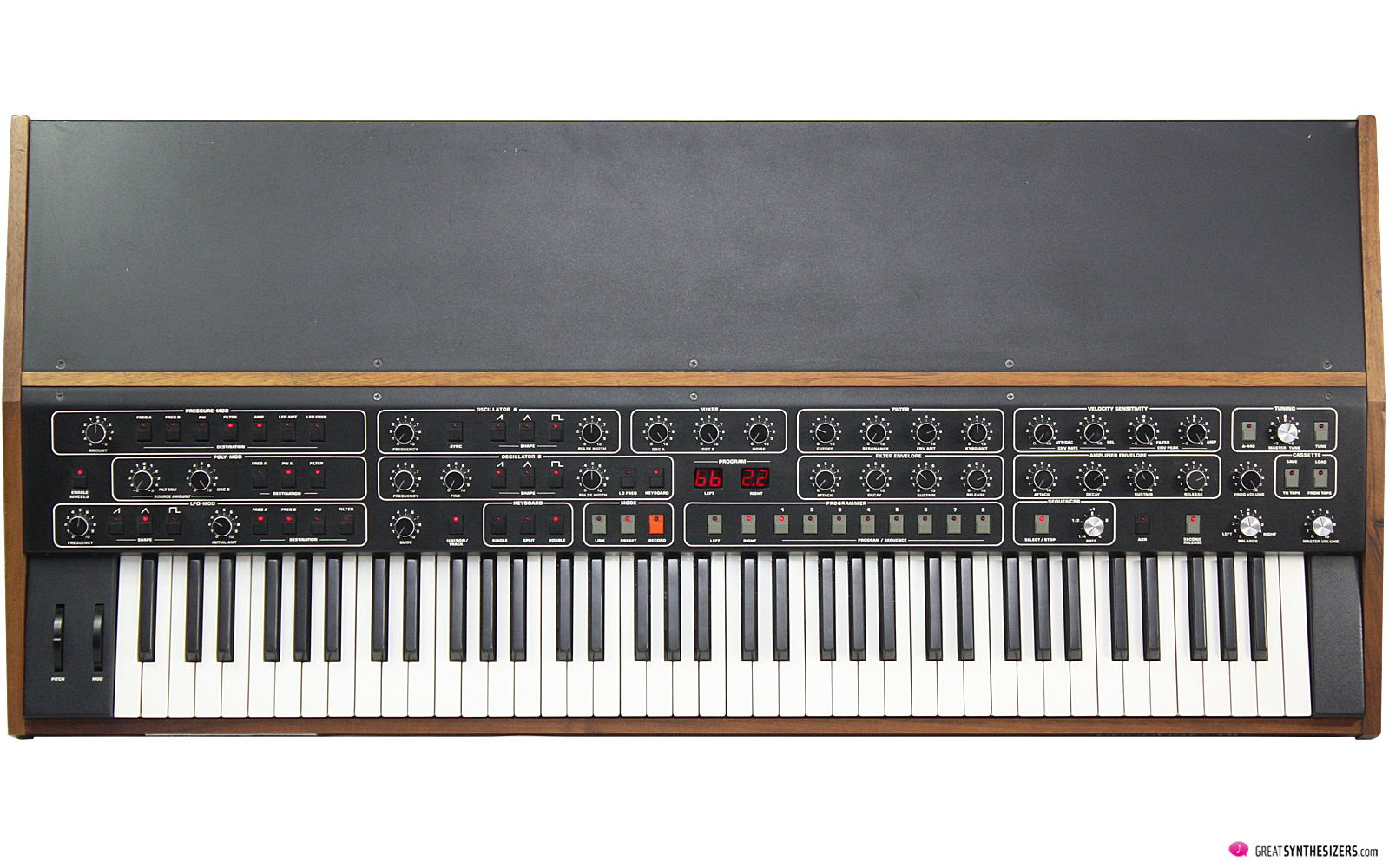



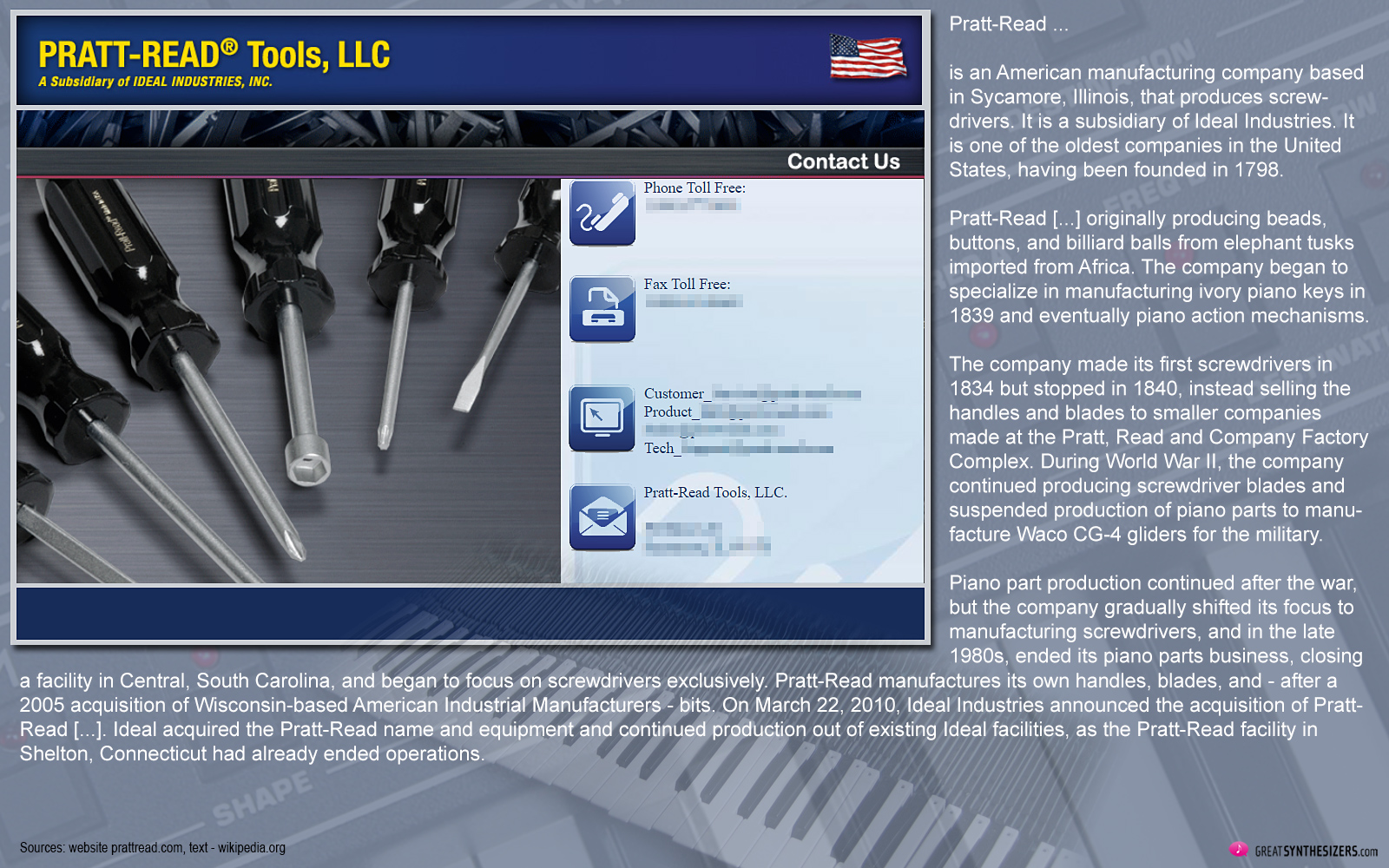
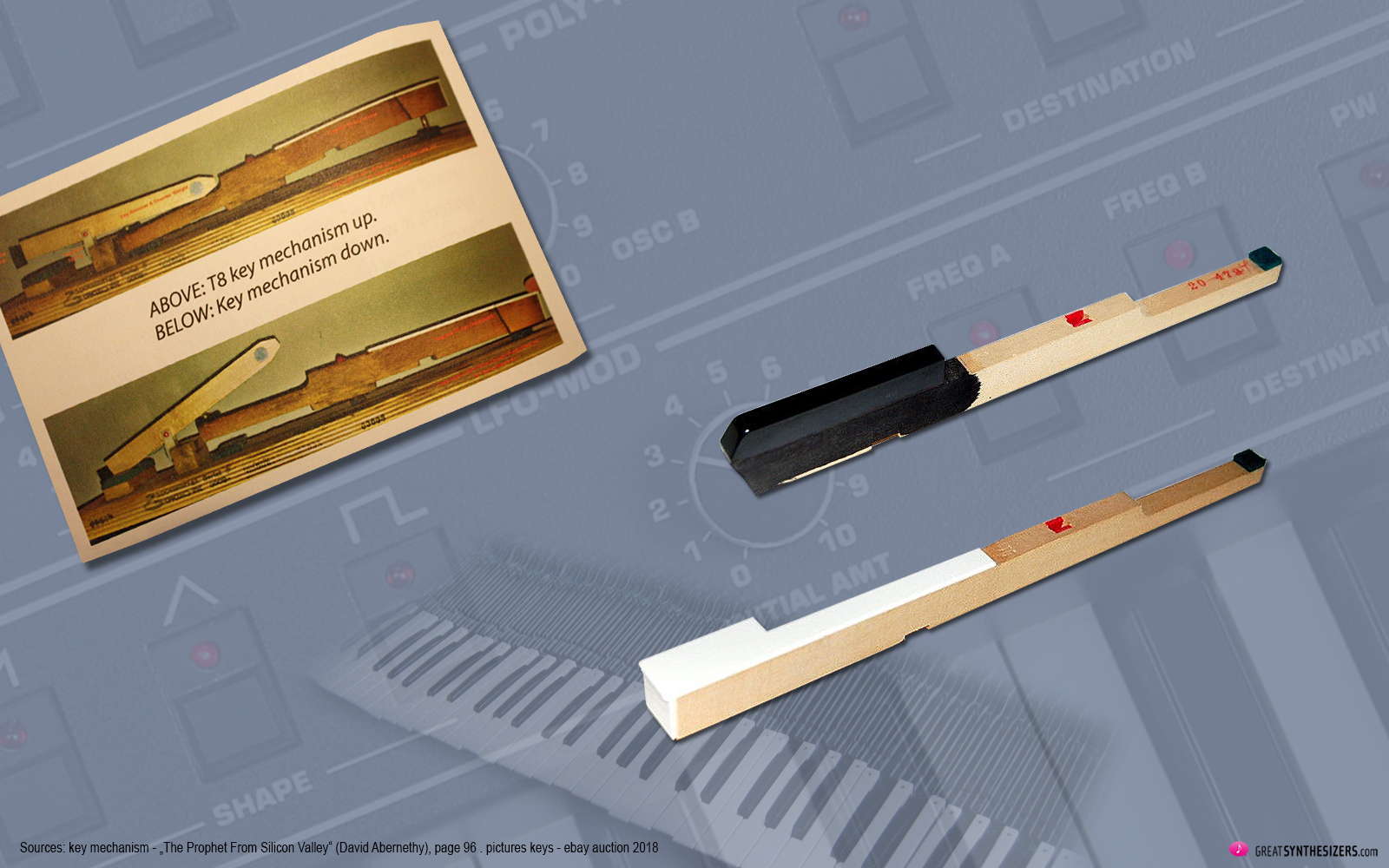
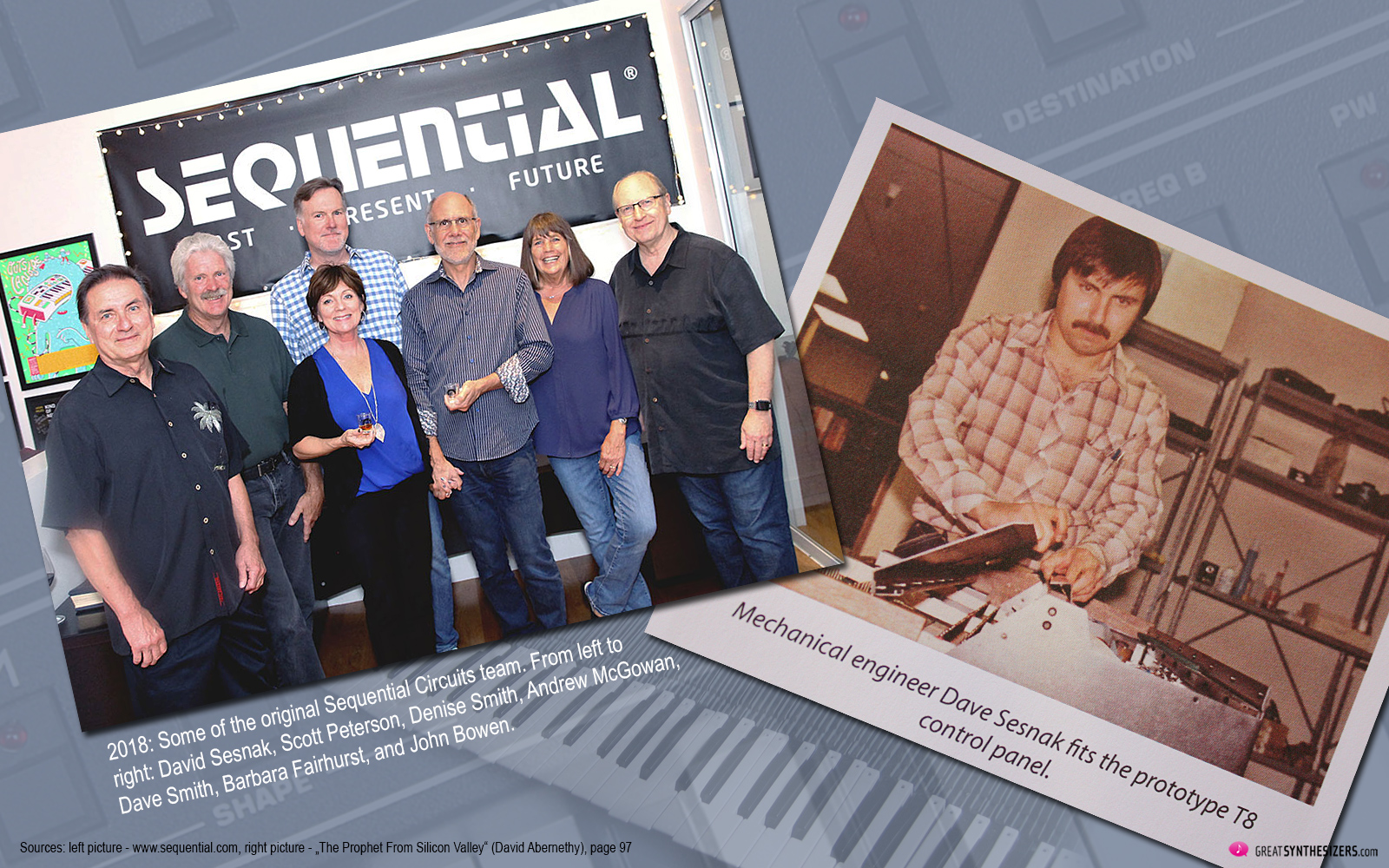
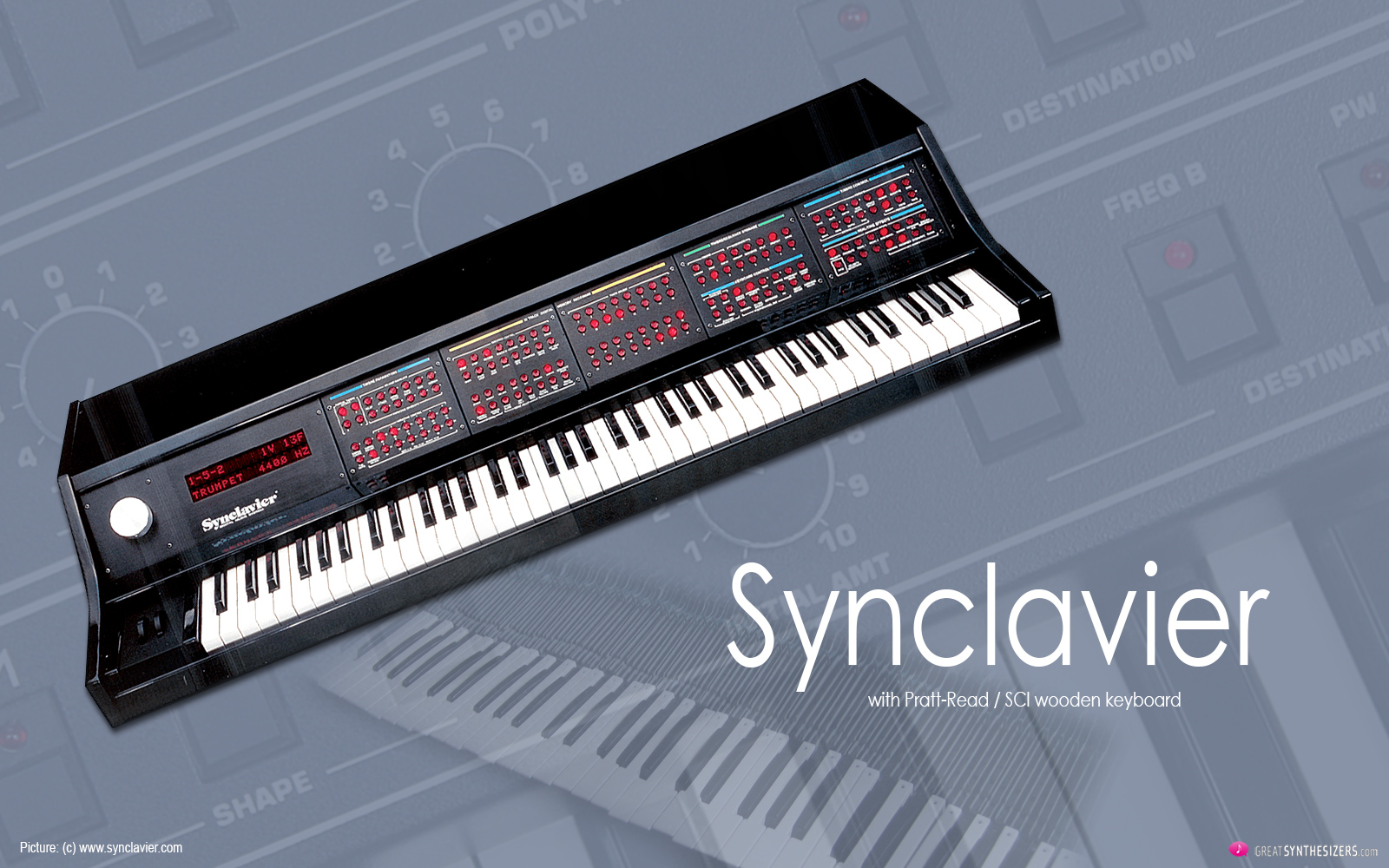

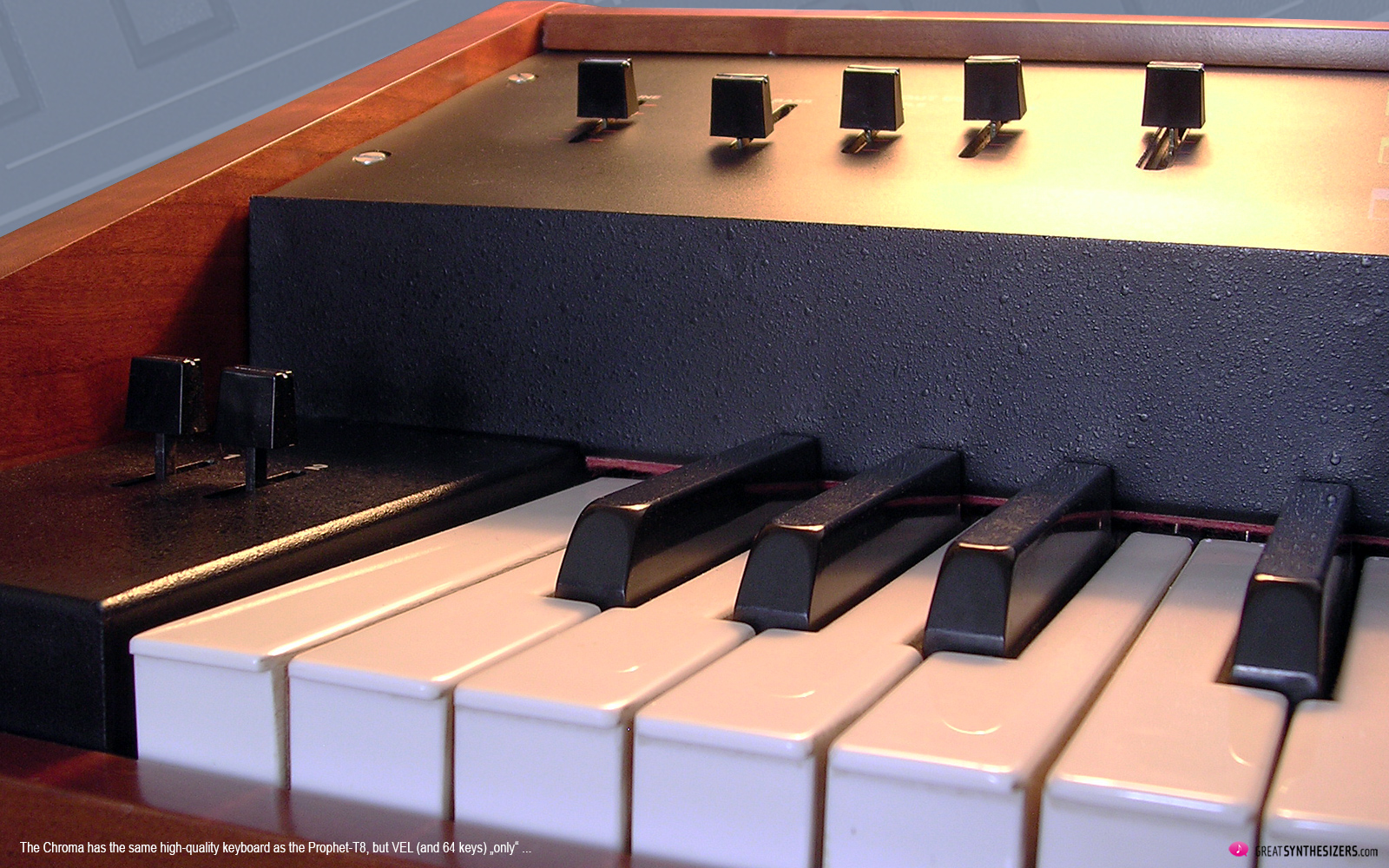
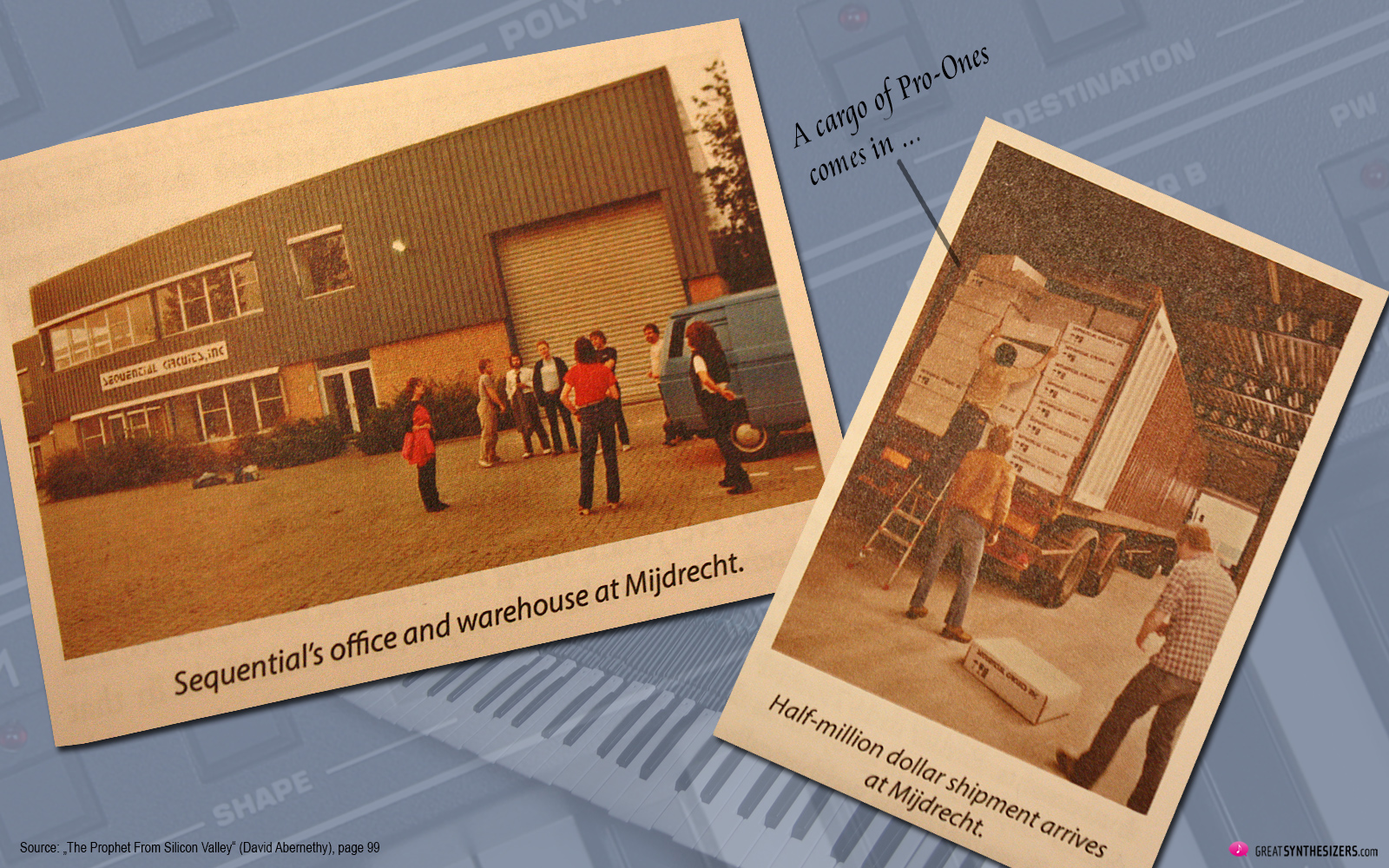

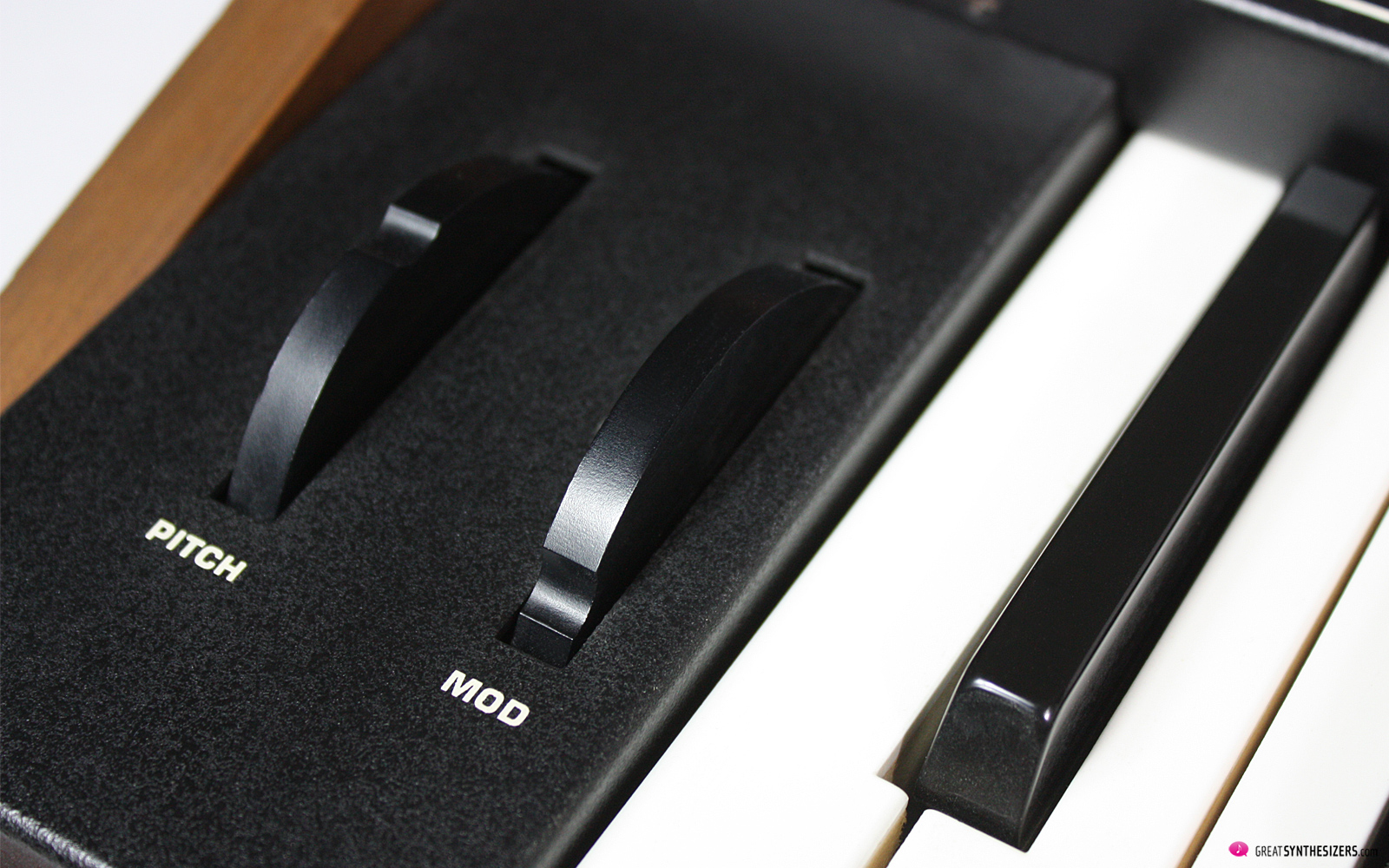
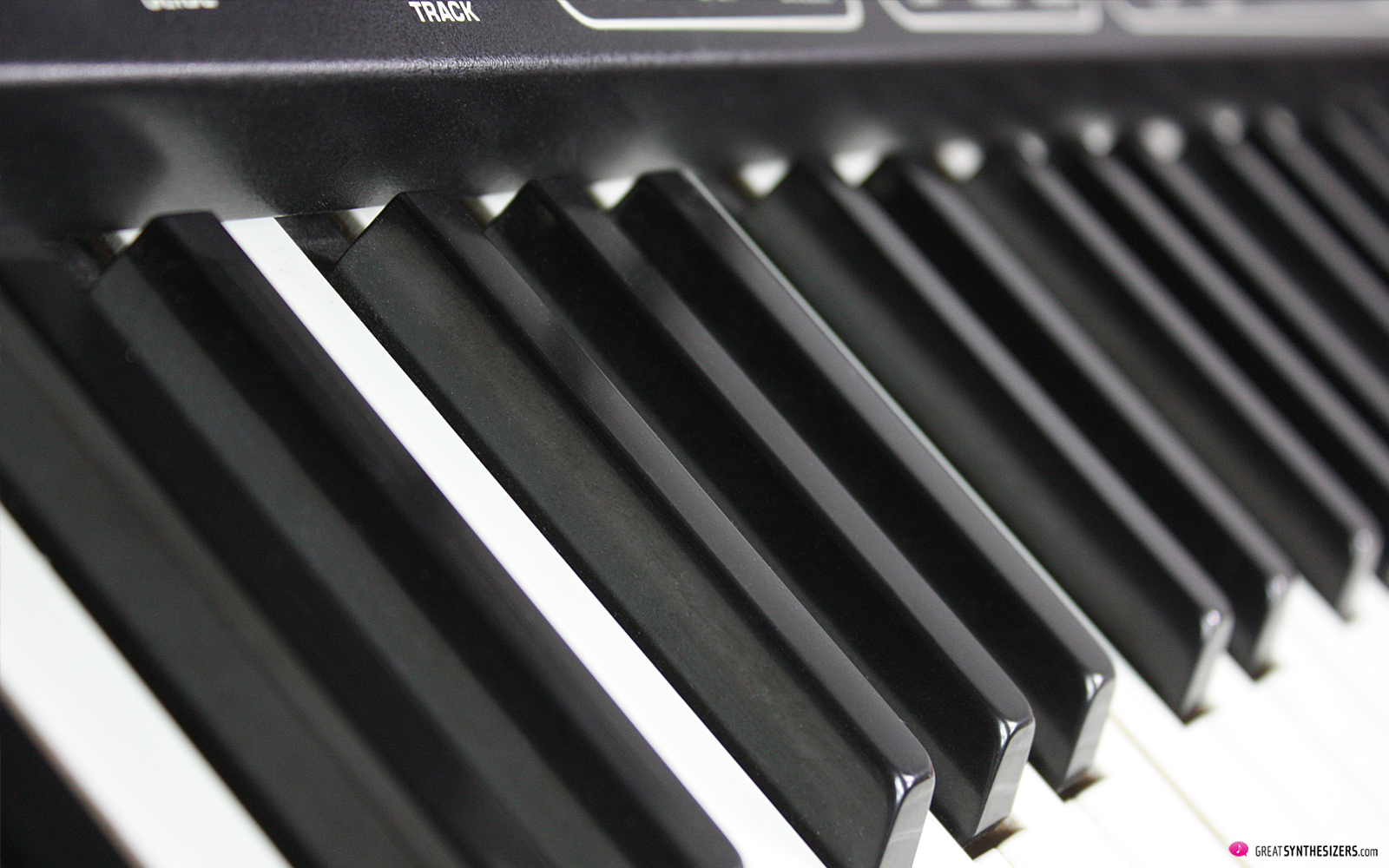
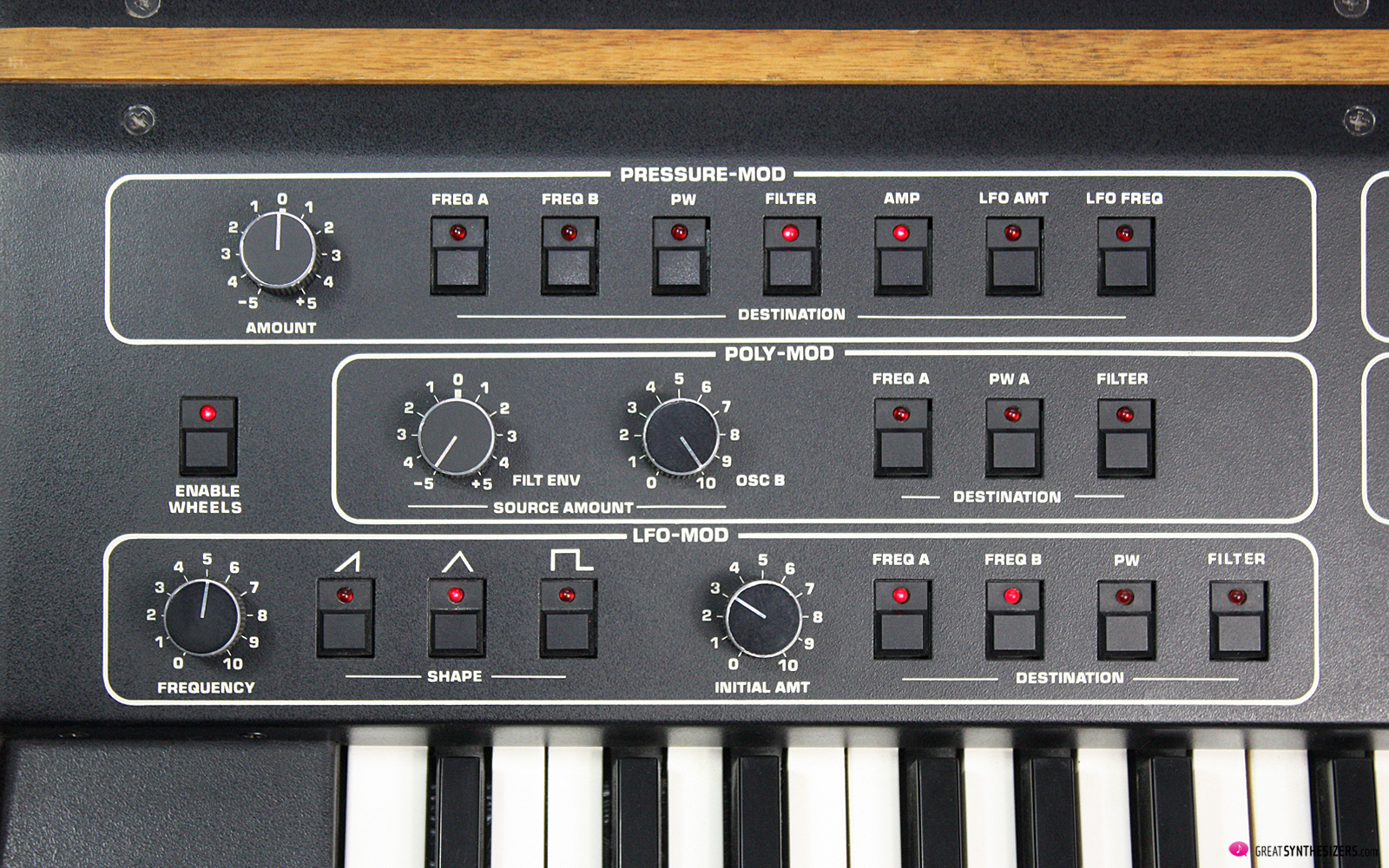


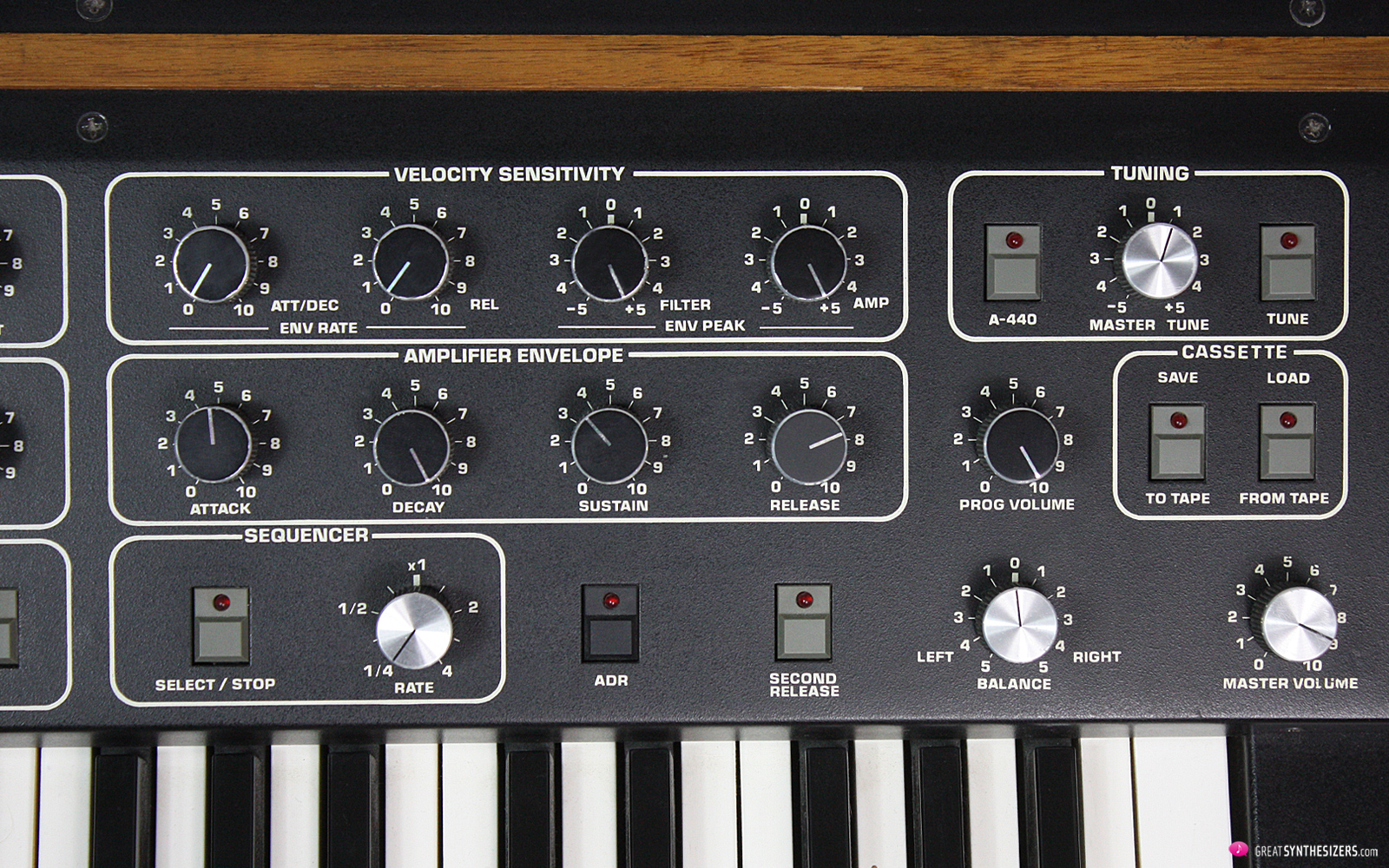

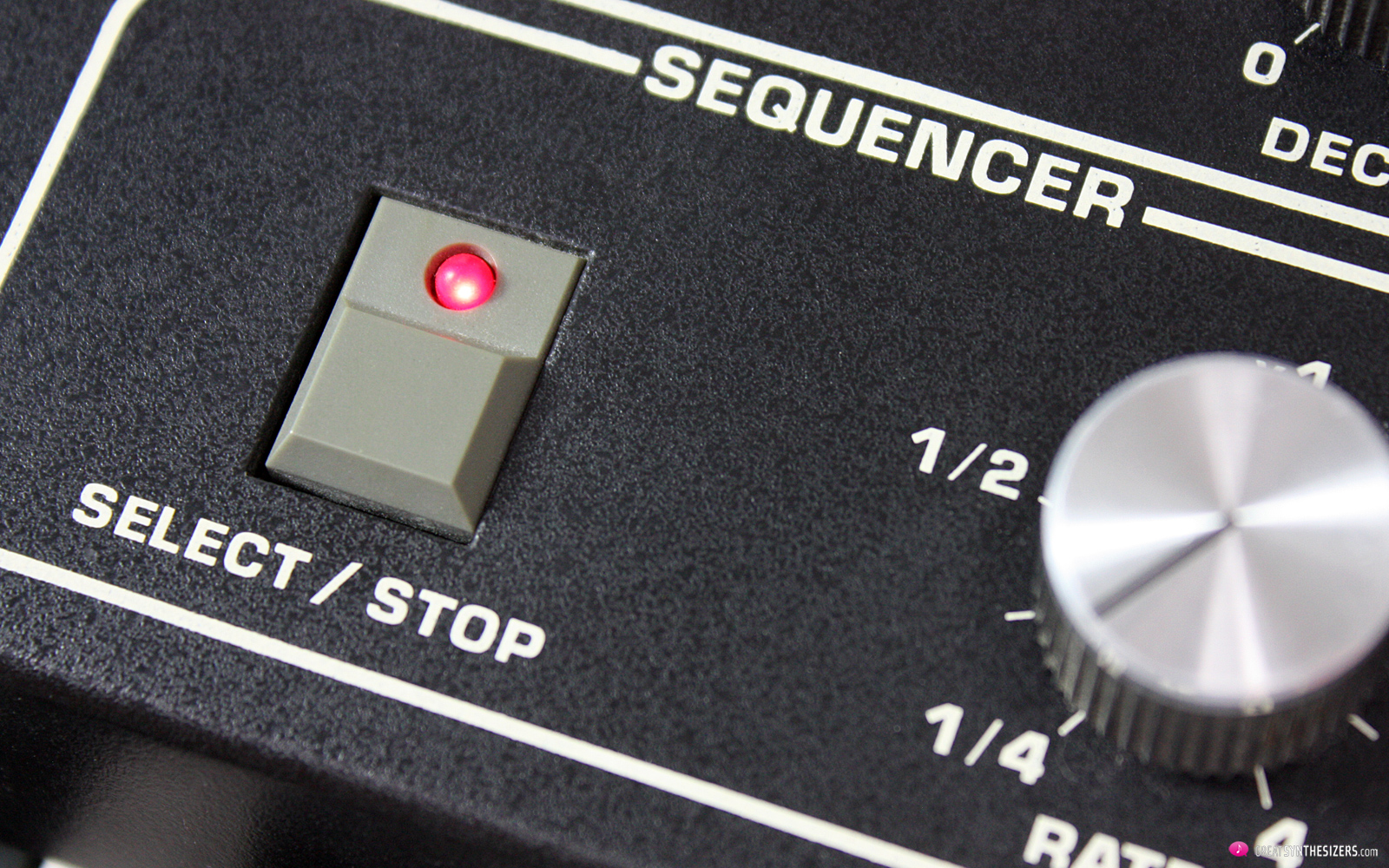
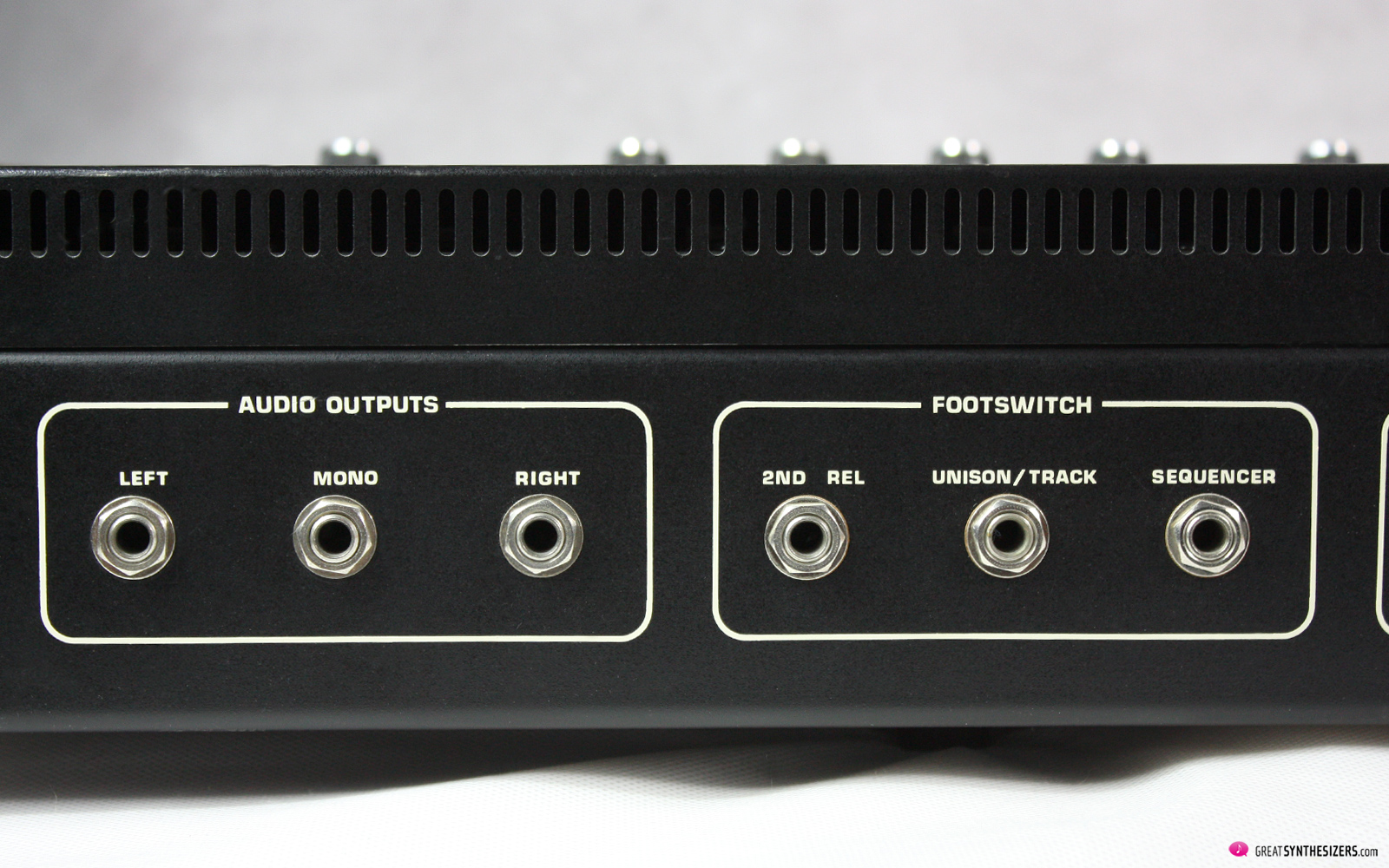
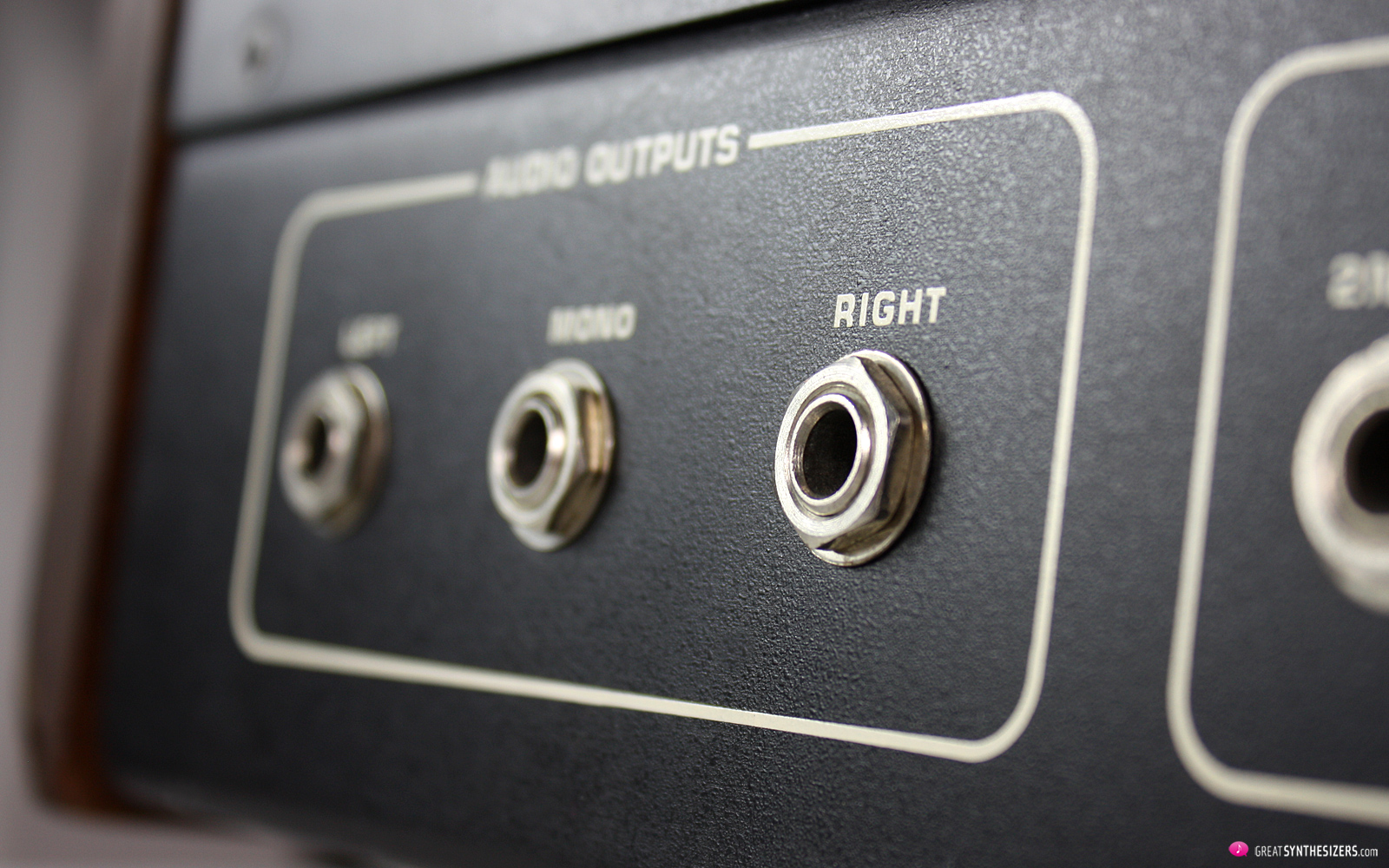
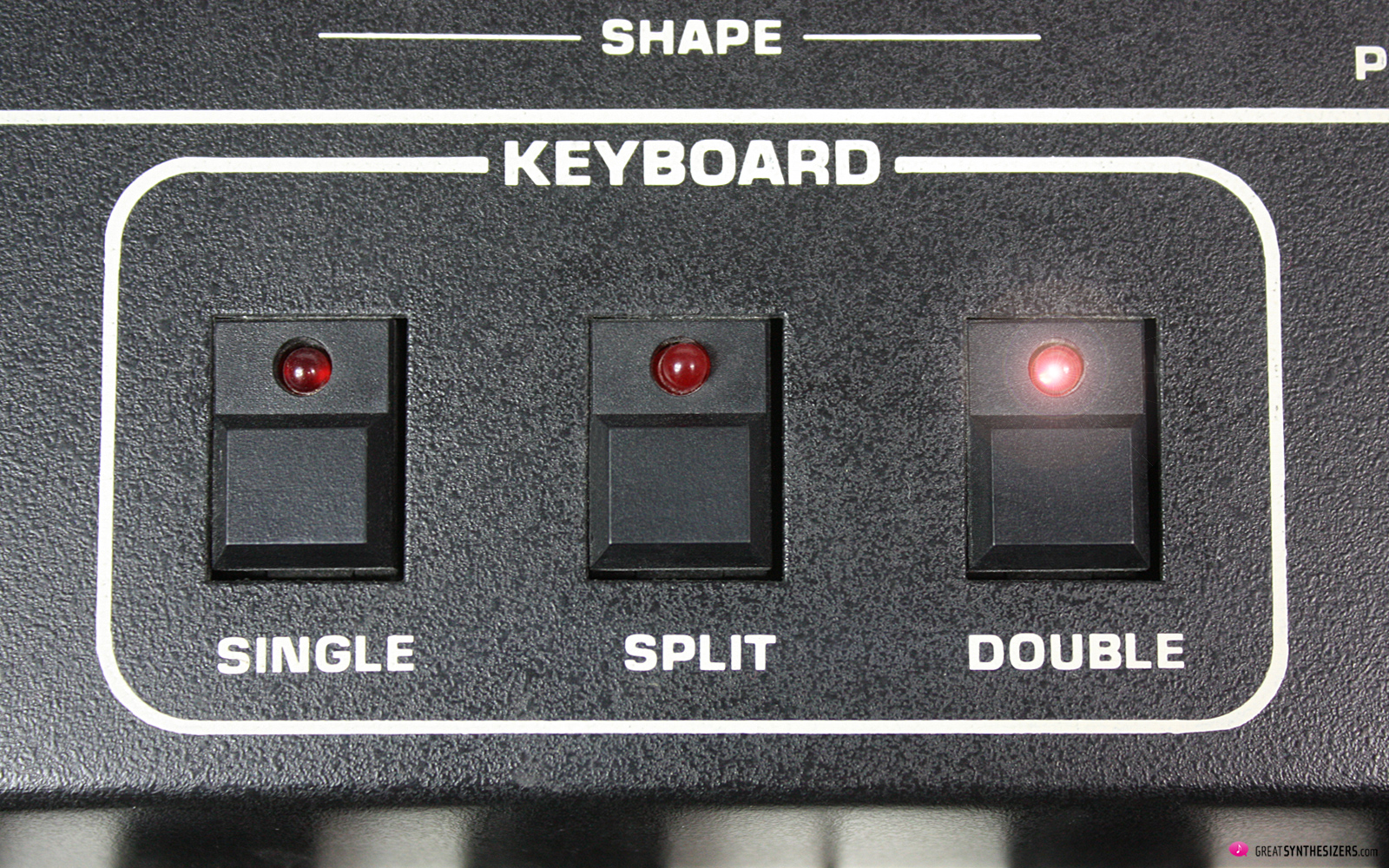

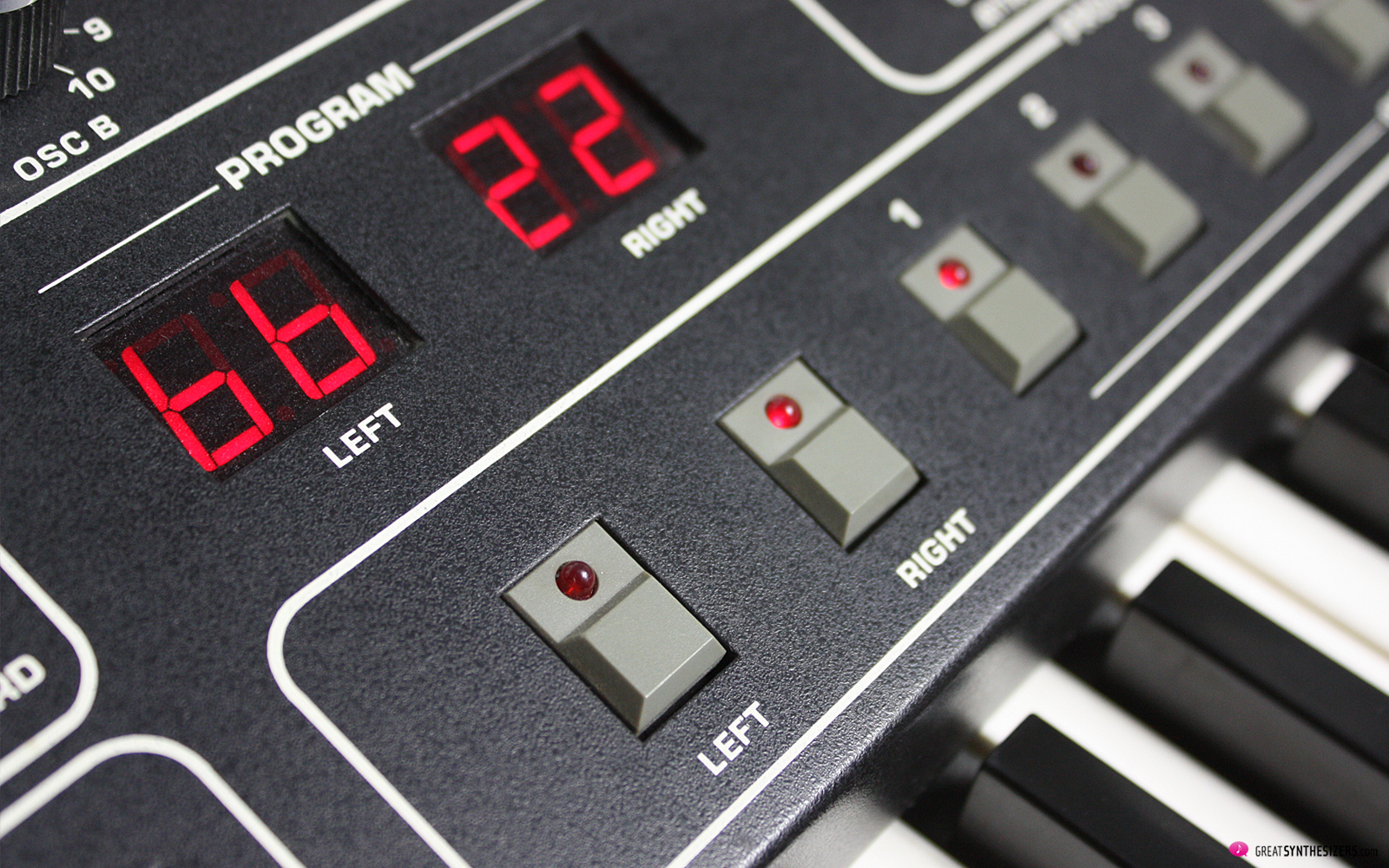
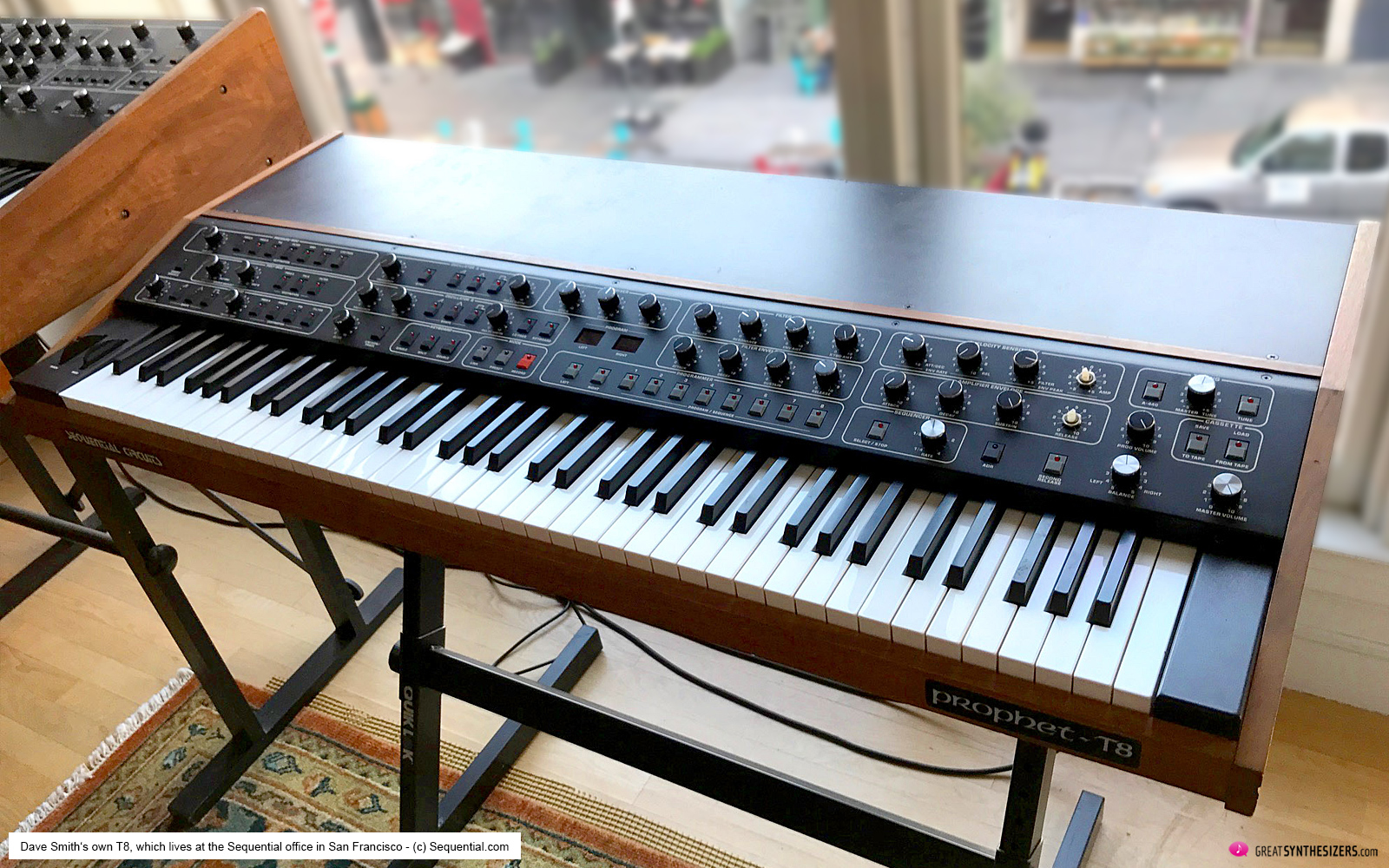
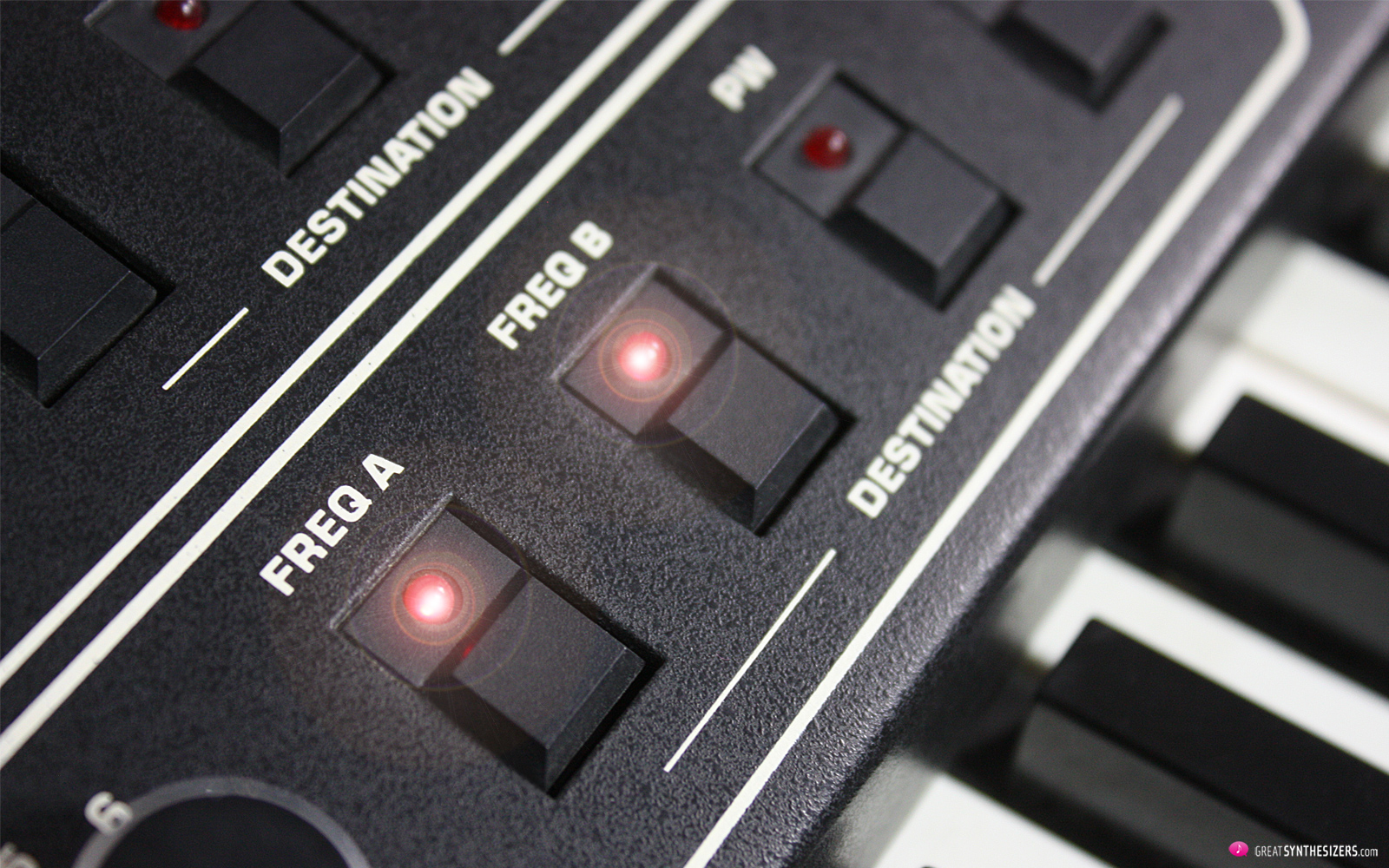
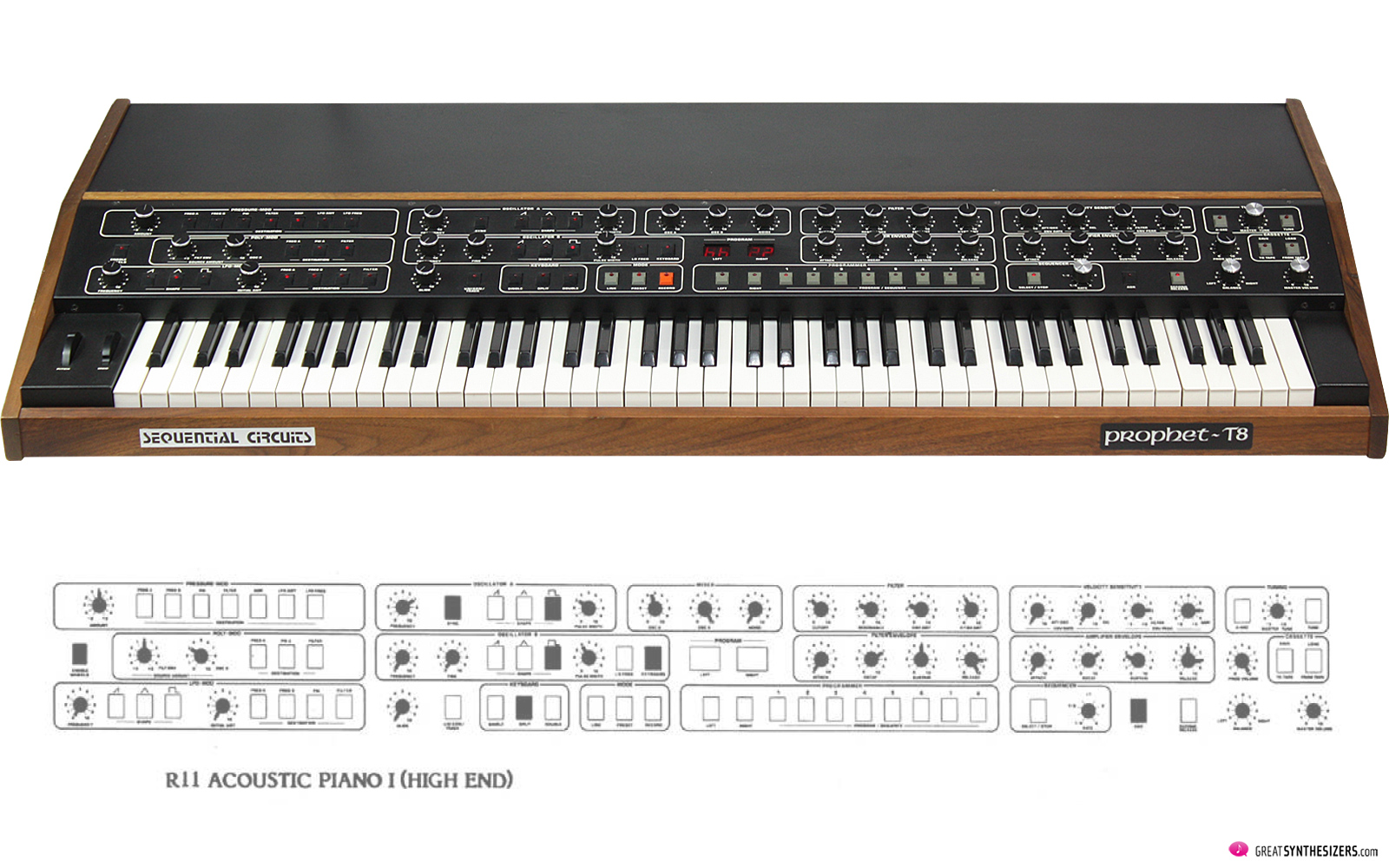
Great Article! I love my T8. Amazing Synth!
All those demo sounds– are they presets? Self-made? A mix of presents and self-made?
… most of them are presets (with quick adaptions according to my needs). Sadly I didn’t have enough time to program the T8 extensively. Sold the T8 in the meantime to a friend and kept the Prophet-5.